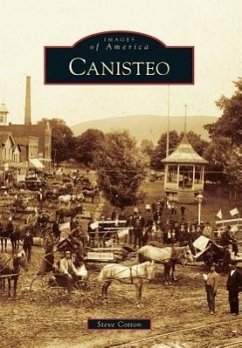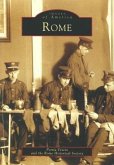In the 1840s, the Erie Railroad construction, which runs along the floor of the Canisteo Valley, began. The first train traveled through the valley on May 14, 1851, opening the region to industry and shipping. The town grew rapidly, and several hamlets sprung up within the township. In the 1930s, an alfalfa farmer planted Scotch pines on the hillside overlooking the valley, spelling out the name Canisteo to the world; the sign appeared in a Ripley's Believe It or Not! book. Today, Canisteo is a bedroom community, as most residents enjoy the peacefulness of the valley they call home while traveling to surrounding communities to work. Local farms produce cattle and crops while many visitors come for the hunting.
Hinweis: Dieser Artikel kann nur an eine deutsche Lieferadresse ausgeliefert werden.
Hinweis: Dieser Artikel kann nur an eine deutsche Lieferadresse ausgeliefert werden.








